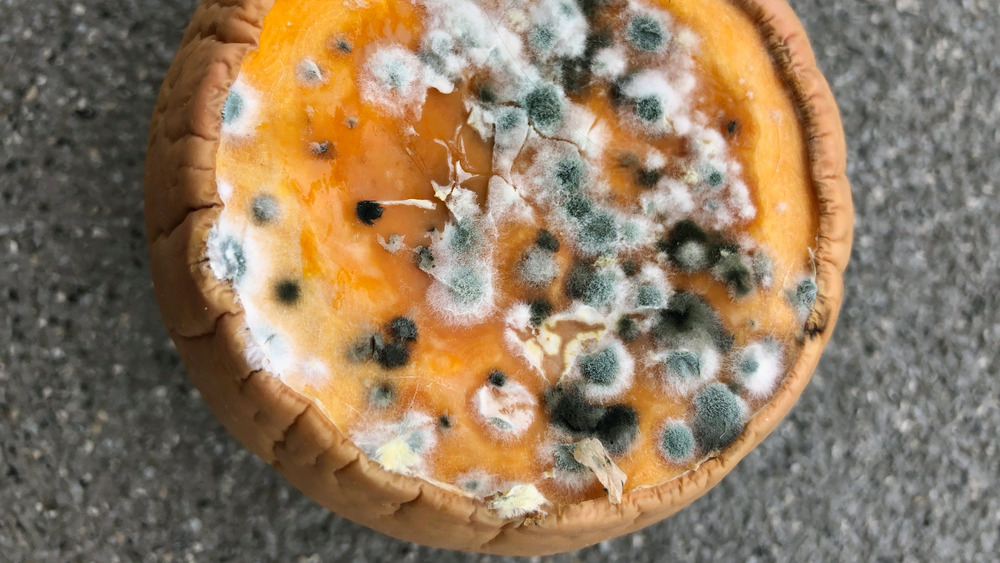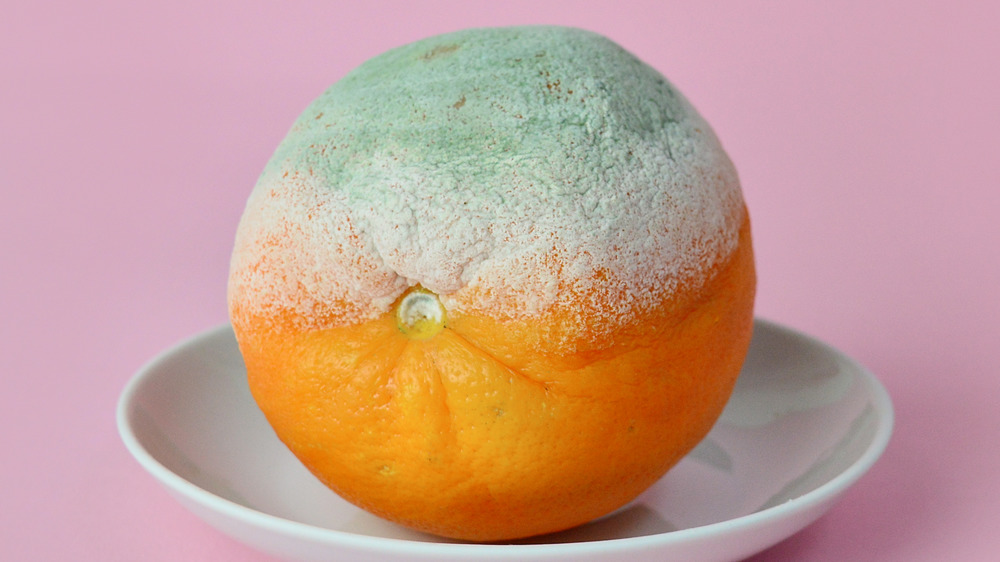What Happens To Your Body When You Eat Mold?
Finding mold on a piece of fruit or a loaf of bread is always a disappointing and gross experience, but what happens to your body if you eat the mold growing on your food? Per Health Digest, it really depends on the type. There are over 100,000 varieties of mold, a microscopic fungi that can be found pretty much anywhere with lots of moisture, dim lighting, and above-freezing temperatures — bathrooms, basements, and, given enough time, even refrigerators. According to Marina Yuabova, D.N.P., speaking to Shape and quoted by Health Digest, "When the immune system works well, and healthy gut flora is abundant, molds will have no negative impact on the health and wellness of that individual."
Basically, accidentally eating a little mold is probably not going to make much of a difference to your overall health. In fact, some mold is beneficial to humans. The mold found in the little veins running throughout blue cheese is part of what gives it is distinctive and, to many, delicious flavor. It's made up of Penicillium mold, which can be safe and even healthy in small doses. Penicillium mold is where the antibiotic penicillin comes from, which has saved many lives. Of course, Penicillium mold can spread rapidly through water-damaged buildings, according to Mold Help, and can cause respiratory problems, pulmonary inflammation, and asthma in those who inhale it. People with immune disorders in particular should reportedly avoid Penicillium mold, as it can worsen symptoms and cause further health problems.
Some molds are more dangerous than others
Another issue to consider is that not all molds are equal. Under certain conditions, some molds produce poisonous mycotoxins that can cause serious illness. The World Health Organization reports that mycotoxins thrive under warm and humid conditions and may be found on "cereals, nuts, spices, dried fruits, apples and coffee beans." Mycotoxins, allergies, immune disorders, and health problems that arise from inhaling moldy air aside, is it possible to save food that has a little mold on it, or does a mold invasion render a piece of food inedible? Once again, it depends.
According to Health Digest, finding mold on hard cheese such as cheddar or solid vegetables such as carrots is not necessarily a deal breaker if it's possible to cut at least one inch around or away from the mold and remove it, taking care not to infect the rest of the food with a moldy knife. For softer produce, bread, and "wet" foods like yogurt or jam, it's best to play it safe and just throw the whole thing away. Mold has roots that can grow easily into softer foods, seeping well below the visible surface, which also makes a welcoming environment for dangerous bacteria. When in doubt, just throw it out!

